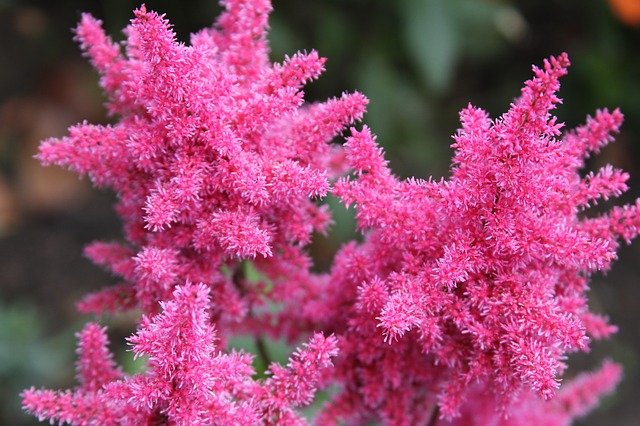If you want to know how to plant bare root astilbe, you’ll be pleased that it’s as simple as two steps. The beauty of this herbaceous perennial is that it thrives in zones 4 to 9, so you are not limited by the locations you can grow it in. But while you can divide a mature plant, most gardeners only have access to bare roots.
It’s common to sell astilbe as bare root, so it’s useful to know how to grow them from this form. The good news is that the method is straightforward, and those who have a greenhouse even has the advantage of successfully establishing plants. After all, starting plants in the greenhouse provides them a stable environment to grow into vigorous plants for transplanting.

How To Plant Bare Root Astilbe For Beginners
Step #1. Preparation
Once you got your bare root, the first thing you’ll notice is that you won’t need to do any cleaning because it’s already free from soil. Therefore, the advantage of planting bare root astilbe is it is ready to grow without the risk of getting damaged. The only factor that you must remember with the bare root is to keep the roots moist as they are prone to drying quickly.
Make sure that it stays in the moist peat moss so that it doesn’t dry out. In some cases, you may need to water it a bit. You may also need to remove the damaged roots before planting them.
Step #2. Planting
Planting the bare root of astilbe itself is straightforward and somewhat similar when you’re growing root cuttings of other plants. Ensure that their planting holes can accommodate the roots, especially when you spread them out. You also want the topmost root to be below the surface, with the growing points an inch below the soil before you fill the hole back.
After planting, water the soil to help with the establishment, and you should notice sprouts within weeks if your region is warm. Some gardeners also use the greenhouse for planting astilbe because the conditions indoors are steady and controllable, and if you don’t want to wait too long for the temperatures to warm up. The bottom line here is that astilbe is a heavy drinking plant, so ensure that you maintain moisture while being mindful not to overwater.
Growing And Caring For Astilbe
As mentioned earlier, you can start your bare root astilbe in the greenhouse since they grow faster in warm temperatures. Astilbe should also thrive well somewhere that receives light for an hour, and you can control this safely with grow lights indoors. You may need to amend your soil to make it richer and improve its drainage.
Caring and maintenance for astilbe are generally simple since the plants don’t have many requirements. Perhaps the factor where astilbe can be demanding is only about watering, which is easy to achieve anyway. Just be mindful of your external factors that can dry the soil faster, so you may need to water as frequently.
Astilbe can also benefit from fertilizing, especially if you want to achieve feathery plumes. Experienced gardeners recommend fertilizers that are high in phosphorus and also cut back the spent plumes to encourage healthy growth. After some years, you can then divide your astilbe and produce more plants.
Common Problems In Growing Astilbe
Astilbe is not only low maintenance, but it’s also a plant that has a few lists of problems to encounter. This plant is relatively pest-free, and with constant monitoring, you should be able to keep the bug population at bay. Growing in a stable environment like the greenhouse should also prevent the plants from developing bacterial leaf spots and powdery mildew due to poor air circulation and humidity.
Another factor that you shouldn’t overlook is your plant’s location, particularly with the sun. One benefit of growing astilbe in the greenhouse is that you get to provide sun without the risk of wilting them, especially in the summer. Aim to maintain astilbe somewhere with filtered shade to prevent burning and drying.
Lastly, you have probably seen the constant reminder in this article to water your astilbe plants well. Astilbe has a higher water requirement compared to other hardy species. However, this is not to say that you’ll leave the plants in standing water; just improve the drainage and maintain soil moisture.
Conclusion
One of the most common ways to acquire and start astilbe is by bare root. But before you panic, it’s worth noting that learning how to plant bare root astilbe is generally straightforward. The primary concept here is to keep the bare root moist and plant it where the roots have enough space to grow.
And because the astilbe has a high water demand, you must always check the soil and water when needed. Once established, you should take comfort in knowing that astilbe isn’t a demanding plant. Its needs are not unique, and you have probably been maintaining these requirements in your greenhouse or garden already.
Overall, astilbe is a hardy plant that you can grow quickly from bare root. However, you must still practice proper maintenance techniques to ensure that it will grow into a vigorous plant. Always monitor the environment and the plant itself to address any potential problems.
